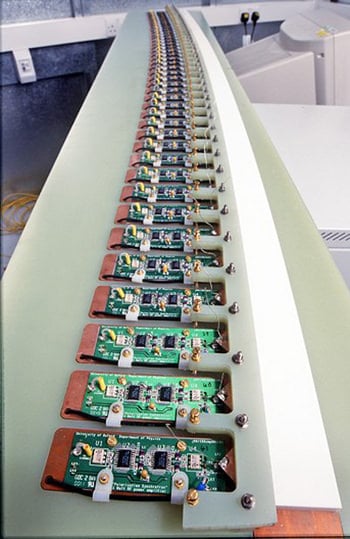[/caption] A scientist has created a gadget that can make radio waves travel
faster than light
. Einstein predicted that particles and information can't travel faster than the speed of light, but phenomena like radio waves are a different story, said John Singleton, who works at the Los Alamos National Laboratory. The polarization synchrotron combines the waves with a rapidly spinning magnetic field, and the result could explain why pulsars — which are super-dense spinning stars that are a subclass of neutron stars — emit such powerful signals, a phenomenon that has baffled many scientists.
Singleton said the polarization synchrotron basically abuses radio waves so severely that they finally give in and travel faster than light. This may be what happens in pulsars, as well.
"Pulsars are rapidly rotating neutron stars that emit radio waves in pulses, but what we don't know is why these pulses are so bright or why they travel such long distances," Singleton said. "What we think is these are transmitting the same way our machine does."
The device consists of a 2 meter-long gently curving arc of alumina (a dielectric material), with a series of electrodes fitted at regular intervals along its length. Applying a sinusoidal voltage across each electrode and displacing the phase of the voltage very slightly from one electrode to the next generates a sinusoidally-varying polarization pattern that moves along the device. By carefully adjusting the frequency of the voltage and the phase displacement the researchers say they can make the wave travel at greater than the speed of light. However no physical quantity of charge travels faster than light speed.
And beyond explaining what has been a bit of a mystery to the astronomical community, Singleton's discovery could have wide-ranging technological impacts in areas such as medicine and communications, he said.
"Because nobody's really thought about things that travel faster than light before, this is a wide-open technological field," Singleton said.
One possible use for faster than light radio waves — which are packed into a very powerful wave the size of a pencil point — could be the creation of a new generation of cell phones that communicate directly to satellites, rather than transmitting through relay towers as they now do.
Those phones would have more reliable service and would also be more difficult for hackers to intercept, Singleton said.
Speedy radio waves could also revolutionize the computing industry. Data could be transferred more quickly, and if used in semiconductors, it would mean faster caches and the ability to communicate across separate pieces of silicon nearly instantly.
In the health field, faster than light radio waves could be in extremely targeted chemotherapy, where a patient takes the drugs, and the radio waves are used to activate them very specifically in the area around a tumor, Singleton said.
Read the paper on the Polarization Synchrotron.
Sources: Current,
Geek.com
,
Roland Piquepaille's Technology Trends
 Universe Today
Universe Today
